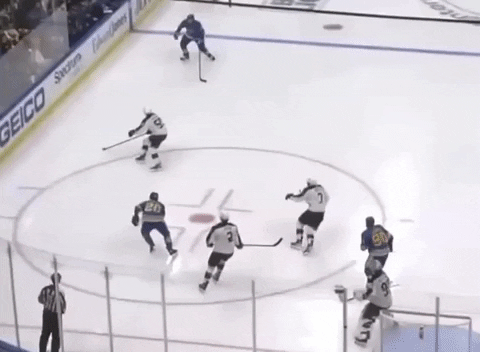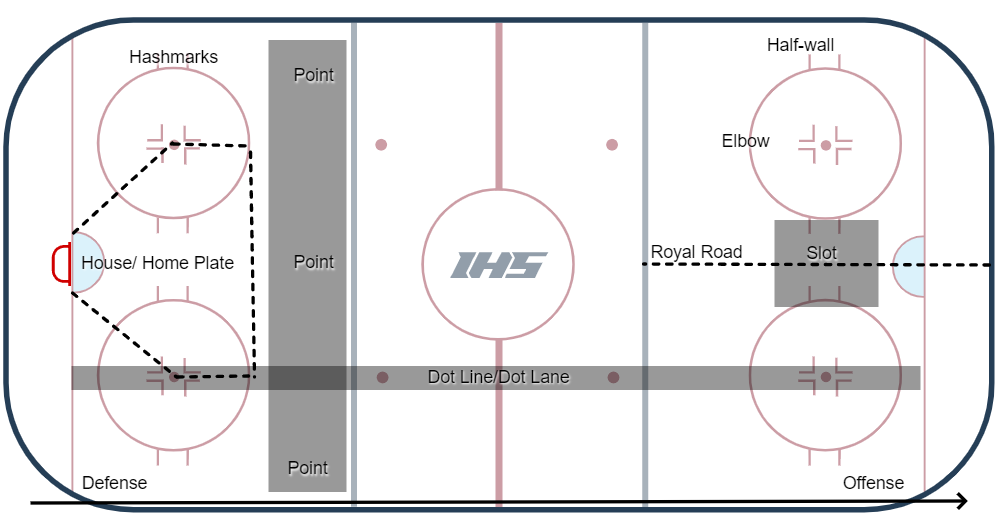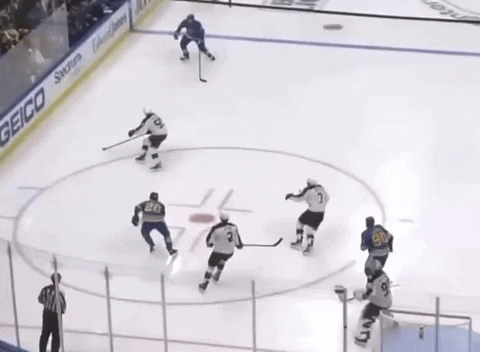Sean Kuraly's Forechecking Keys
How to get better at forechecking with Sean Kuraly
First off, a big thank you to the Columbus Blue Jackets for granting me media access in the preseason.
I had a chance to speak with a handful of players, but for whatever reason, Sean Kuraly stood out. He’s articulate and bright, and it’s obvious to see why he’s made it to the NHL and been able to stick as a contributing member of a club. Just a few days after our chat, he scored a great goal (his first and only goal so far this season) by utilizing his forechecking prowess.
Let’s first take a look at the goal, then pull out Kuraly’s four keys to forechecking success. Using these will make players better at forechecking and increase their effectiveness.
Sprinting / First Few Strides
“First and foremost, you’ve just got to take away as much time and space as you can from the defender going back on the puck. The less time he has, the less space he has to look up ice. The more you have a chance.
You have to get up ice right away. First five strides out of your zone or out of the neutral zone. From there you can make a read.”
Kuraly will never be accused of not working hard on the rink. He constantly is sprinting to put himself in spots consistently. Most players fail to get into these spots because it’s difficult work and the odds can be low. Said another way, most of the time, nothing comes as a direct result from the hard work… but every now and then, he is able to feast. This is what coaches and commentators mean when they talk about a player “playing the right way” or “playing the game honestly.”
“[Patrice Bergeron & Brad Marchand are] never lazy. Their first strides are right up the ice.”
You want to put work on the front end, not the back end.”
This is a concept that can be illustrated well with your organizational habits.
Do you put work in on the front end (i.e., do you organize)? If so, your back-end work is very easy! You know exactly where your things are and there is no rushing or panicking.
Do you throw your things into a general area or junk drawer? This is easy work on the front end, but there is a good chance you have to rummage to find your things on the back end. You’re likely to take more time on the back-end too.
Front-end work makes back-end work better/easier and you’ll get “luckier.”
Stick-on-puck
“You have to go in with you stick-on-puck.”
The first thing I’ll always remember about Bergeron is his stick. His stick is always on the ice, half the time it just hits his stick and disrupts it.”
The hockey stick is a tool. Humans have developed so well due to their ability to use tools effectively. This is why it drives coaches insane when players fail to use their #1 tool and willingly concede space/passing lanes!
Leading stick-on-puck allows players to close down space more effectively and break up pucks (“ticks”). Leading stick-on-puck often leads to stripping the opponent, getting a tick to create a turnover or 50/50 puck, or simply disrupting the opponent’s flow of play.
Understanding Tendencies
“Understanding tendencies and what the other guy wants to do.”
There are some universal tendencies such as players tend to favor their forehand. Then there are some personal tendencies.
At levels where teams don’t play often and little video is available, universal tendencies are great places to start. At levels where teams play often and video is readily available, players leave a lot on the table if they are not studying their opponents.
Funnel Up & Back
“It’s always sprinting up the ice through the middle”
Sprinting through the middle allows players to increase their luck. Players are close to everywhere when sprinting through the middle and can then read the play from there. Using the dot line/lane is a great reference point.
There are different forechecking roles for F1, F2, and F3. Rotating out of F1, the 1st player in on the forecheck, players are needing to “reload” and “get above the puck.”
Sean Kuraly’s Game
Now let’s look at Kuraly’s goal while looking for the four keys from above.
Sprinting / First Few Strides
Stick-on-puck
Understanding Tendencies
Funnel Up & Back
Further Study
For those looking to study Kuraly further and looking at why he may be a great bottom six-player compared to a top-six player, I suggest watching for these elements:
Sometimes he skates too far/hard and disrupts F2 and F3 spacing.
Lack of scanning and how it affects his ability to cover the correct space or opponent.
Underutilization of offensive zone space. Especially, ignoring the corners and behind-the-net switches. He’s carved a role out as a defensively responsible player so you’ll notice that he errs on the side of caution and stays ‘strong side’ on the defensive side of the puck.
Further Reading




